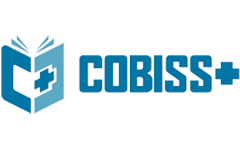Customer Base Brand Equity Approach and Consumer Loyalty of Purchasing Decisions on Online Shopping in Indonesia
DOI:
https://doi.org/10.61841/8sfnzw58Keywords:
Partial least square, CBBE, Customer loyalty, E-Commerce, Purchase decisionAbstract
In the digitalization era, the Indonesian people were very fond of the type of online shopping, and this was seen as an opportunity for e-commerce companies. Data on the number of visitors for each e-commerce website has increased, but this has not been offset by increased revenue. Some e-commerce companies have the highest ranking on the number of visitors, but the revenue earned does not reflect that position. This indicates that there is a mismatch between the number of website visitors and the revenue earned by each company. Is the increasing number of visitors an effect of good customer base brand equity, why this does not have an impact on the addition of reports in each company, and how the influence of customer base brand equity and customer loyalty towards purchasing decisions in online shopping—various questions above can be answered through this research. The survey was conducted on 100 respondents who were consumers of Lazada e-commerce in parts of West Java and DKI Jakarta, namely the cities of Bandung, Bogor, Depok, Tangerang, Bekasi, Garut, Tasikmalaya, and Sumedang. The survey results were obtained using Partial Least Square (PLS-SEM), a type of construct with a reflexive indicator. Based on the analysis, the findings are: (1) Customer-based brand equity has a positive and significant effect on online purchases, especially for Lazada. (2) Consumer loyalty, consisting of cognitive loyalty, affective loyalty, connective loyalty, and action loyalty, has a negative effect on purchase decisions but has a significant influence on the formation of purchase decisions on online purchases.
Downloads
References
[1] Ahmad, S., Zulkurnain, N., & Khairushalimi, F. (2016). The Measurement Model of Structural Equation Modeling (SEM). British Journal of Mathematics & Computer Science, 15(3), 1–8. https://doi.org/10.9734/bjmcs/2016/25183
[2] Badrudin, R. (2012). The Model of Developing Small Micro Enterprises Resists With One Village One Produces to Reduce Poverty. Proceedings of the National Seminar and Call for Poverty Reduction Paper through MSMEs: Comparison of Indonesian and Malaysian Models in Yogyakarta.
[3] Haenlein, M., & Kaplan, AM (2004). A Beginner's Guide to Partial Least Squares Analysis. Understanding Statistics, 3(4), 283-297. https://doi.org/10.1207/s15328031us0304_4
[4] Keller, KL (2013). Strategic Brand Management: Building, Measuring, and Managing Brand Equity. India: Pearson Education India.
[5] Khotler, P. & Armstrong, G. (2008). Principles of Marketing. Jakarta: Erlangga.
[6] Latan, H. & Ghozali, I. (2012). Partial Least Squares: Concepts, Techniques, and Applications of Smart PLS 2.0 M3. Semarang: Diponegoro University Publishing Agency.
[7] Maruta, IGNA, Andi, S., & Nanis, S. (2017). The Effect of Market Orientation, Entrepreneurship Orientation, and Imitation Strategy on Competitive Advantage (Study on SME of Leather Bag and Suitcase in East Java). International Journal of Business and Management Invention, 6(7), 24–35.
[8] Morard, B. & Simonin, D. (2016). Partial Least Squares Modeling in Marketing Research: A Tailor-Made Model of Wine e-Commerce Consumers in Switzerland. Journal of Economics, Business, and Management, 4(5), 410–417. https://doi.org/10.18178/joebm.2016.4.5.427
[9] Rahab. (2009). Application of Brand Management in Small and Medium Enterprises (SMEs). Journal of Business and Economics, 16(1), 18-25.
[10] Rifai, M., Indrihastuti, P., Sayekti, NS, & Gunawan, CI (2017). Strategy in Enhancing the Competitiveness of Small and Medium Enterprises in the ASEAN Free Trade Era. International Journal of Academic Research in Business and Social Sciences, 6(12), 76–87. https://doi.org/10.6007/ijarbss/v6-i12/2471
[11] Saudi, M.H.M., Sinaga, O., & Rospinoedji, D., The role of tax education in supply chain management: A case of Indonesian supply chain companies, Polish Journal of Management Studies 18(2):304-319, December 2018.
[12] Schiffman, L. & Leslie, LK (2008). Consumer Behavior. Jakarta: PT Index Group.
[13] Sumi, K. (2017). Reliability and Construct Validity of the Gratitude Questionnaire 6 Item Form (GQ 6) in a Sample of Japanese College Students. Journal of Positive Psychology and Wellbeing, 1(2), 73–84.
[14] Suntivong, D. (2014). Make or break it in SMEs brand building, an empirical study of the impact of brand development on the performance of Thai SMEs. Journal of Business and Management, 16(4), 19-28.
[15] Susilo, YS (2010). Strategy to Increase MSME Competitiveness in Facing the Implementation of Cafta and Mea. Economic Bulletin, 8(2), 70–78.
[16] Syukriah, A. & Hamdani, I. (2013). Increasing the Existence of MSMEs Through Comparative Advantage in Order to Face the 2015 Mea in Temanggung. Journal of Economics Development Analysis, 1(1), 1–14. https://doi.org/10.1016/S0301-7036(14)70862-4
[17] Tenenhaus, M., Amato, S., & Vinzi, VE (2000). A global goodness-of-fit index for PLS structural equation modeling. Proceedings of the XLII SIS Scientific Meeting, 739–742.
[18] Wang, X., French, BF, & Clay, PF (2017). Convergent and Discriminant Validity with Formative Measurement: A Perspective Mediator. Journal of Modern Applied Statistical Methods, 14(1), 83–106.https://doi.org/10.22237/jmasm/1430453400
[19] Yanah, Y., Nakhwatunnisa, H., & Sukarno, T. (2018). Strategy to Increase the Competitiveness of SME's Enterprises. Journal of Economics and Policy, 11(17), 138–150. https://doi.org/https://doi.org/10.15294/jejak.viii.11705
[20] Edraki, M., Haghshenas, M., Yektatalab, S., Dehghani, S.M., Haghpanah, S. The effect of educational-psychological interventions on the resilience of the mothers of 1-to-3-year-old children with chronic liver disease leading to cirrhosis (2018) International Journal of Pharmaceutical Research, 10 (2), pp. 222-226.
[21] Diorge jônatas marmitt, Shanna Bitencourt, Amanda do Couto e Silva, Márcia Inês Goettert, and Claudete Rempel (2016) medicinal plants of Renisus with analgesic activity. Journal of Critical Reviews, 3 (3), 1-4.
[22] S. Swati, K. Sowjanya, R. Lakuma, S. A. Sunaina, G. Srividya, V. Rohitha. "Epidermodysplasia Verruciformis-A Genetic Disorder." Systematic Reviews in Pharmacy 8.1 (2017), 71-75. Print. doi:10.5530/srp.2017.1.12
Downloads
Published
Issue
Section
License
Copyright (c) 2020 AUTHOR

This work is licensed under a Creative Commons Attribution 4.0 International License.
You are free to:
- Share — copy and redistribute the material in any medium or format for any purpose, even commercially.
- Adapt — remix, transform, and build upon the material for any purpose, even commercially.
- The licensor cannot revoke these freedoms as long as you follow the license terms.
Under the following terms:
- Attribution — You must give appropriate credit , provide a link to the license, and indicate if changes were made . You may do so in any reasonable manner, but not in any way that suggests the licensor endorses you or your use.
- No additional restrictions — You may not apply legal terms or technological measures that legally restrict others from doing anything the license permits.
Notices:
You do not have to comply with the license for elements of the material in the public domain or where your use is permitted by an applicable exception or limitation .
No warranties are given. The license may not give you all of the permissions necessary for your intended use. For example, other rights such as publicity, privacy, or moral rights may limit how you use the material.
















